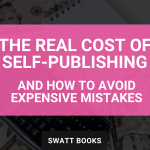In the 26 months since ChatGPT and similar AI technologies have taken the world by storm, businesses in nearly every industry have unlocked powerful ways to boost efficiency, creativity, and cost-effectiveness. Yet, the publishing world has been slower to embrace this transformative technology. For authors, particularly those navigating the world of self-publishing, this creates a unique opportunity. By strategically integrating AI tools for publishing into your process, you can enhance your writing, streamline production, and supercharge your marketing efforts—all while maintaining the creativity and authenticity that make your book stand out.
In this article, we’ll explore how AI can revolutionize your publishing journey, what challenges you need to be aware of, and why ethical, thoughtful use of this technology is key to your success. Ready to discover how to leverage these tools without compromising your voice or vision? Let’s dive in!
10 Ways to Ethically Leverage AI Tools for Publishing
I’m not against AI—far from it. I firmly believe that the strategic and ethical use of AI is going to be one of the deciding factors of what makes really successful books and authors in the future. That said, here are 10 ways that you can start to incorporate ethical AI into your publishing process now.
Writing and Editing
1. Technical Writing Quality:
We all know that there are rules to good writing. Spelling, grammar, good sentence structure, iteration; all these things have an impact on how your writing is perceived. Tools like Grammarly and ChatGPT can help authors refine the technical quality of their writing.
I DO NOT and never will advocate that you use generative AI to write for you, but it can be a very powerful tool to help you improve your writing. For any writing I do, I always have Grammarly running in the background giving me real-time advice on how to improve my writing because I know that I am an atrocious speller and that I don’t have a very firm grasp of the technical rules of writing.
2. Content Ideation:
As business owners and thought leaders in our respective industries, there is a LOT of stuff that we know. And because we are experts in our chosen fields, we often lose sight of just how much knowledge and insight we have to offer, because it has become second nature to us. AI can be an amazing tool to help us sort through all the information that we CAN include in our books from the perspective of what our readers need and want.
I employed this tactic for my latest book, “The Write Strategy” to help make sure that I covered the topic of ‘how and why to write a business book to leverage thought leadership’ fully and in a way that would best serve my readers. I used ChatGPT to brainstorm the idea fully, and then generate an outline that I then used as my writing prompts for every writing session until I had completed my draft manuscript.
3. Editing:
Having a professional edit your book before it’s published is a must for any successful book, and I do not suggest that you replace a professional with an AI editor. However, running your book through an AI tool like ChatGPT or ProWritingAid can help weed out the more basic spelling, grammar and writing errors. This is turn will reduce the cost of your professional edit as your editor can focus on the bigger picture instead of the little nit-picky things.
Book Design and Formatting
4. Cover Design:
Visual AI tools such as Adobe Firefly, Dall•e, and Midjourney have become extraordinary at generating compelling graphics that can be used as the basis for eye-catching book covers. But as with AI writing tools, you should rely solely on what the model spits out. Game-changing book covers often start with an AI-generated image, but then utilise the skills of a professional designer to incorporate that image into a professional cover layout that optimises colour theory, aesthetical layout and pin-sharp typography to wow readers into picking your book up off the shelf.
Marketing and Promotion
5. Targeted Marketing:
Marketing and promotion of your books is where generative AI tools truly come into their own. You can utilise AI tools to build out ideal reader avatars and then generate targeted advertising and promotional campaigns for each sector within your reader demographic, all using best practice strategies that are being employed by top marketers.
6. Content Creation:
We all know that content creation for marketing and promotional campaigns can be a grind. But this is what generative AI was built for. By prompting tools like ChatGPT with your ideal reader avatar, and your marketing and promotional goals and training it on the content of your book, it can generate social media posts, newsletters, or even video scripts to launch and promote that book in a fraction of the time.
7. SEO Optimisation:
You can also use tools like SurferSEO or SEMrush to help optimise blog content and landing pages to help boost SEO and spread the word about your book through organic search results. You can even take this one step further and use these tools to improve the metadata for your book, helping you to draft short and long descriptions, keywords, and even category suggestions to help improve your book’s discoverability.
Distribution and Sales
8. Audiobook Narration:
Though audiobooks as a format are more accessible to self-publishing authors through platforms like ACX and Findaway Voices, the cost of producing audiobooks was still very prohibitive. However, since Audible relaxed its restriction on the use of AI narrators in its catalogue, authors now have a more cost-effective solution for the production of audiobook content by utilising AI narration to reduce the need for costly production studios and sound mixing equipment.
9. Personalised Recommendations:
Most people do not realise that Amazon’s customer-facing platforms have been running on AI for nearly two decades! They were one of the first shopping platforms to use AI as a product recommendation engine based on user behaviour. By optimising your book’s metadata, you can take full advantage of the powerful AI algorithms already operating behind the scenes at Amazon to enhance book discoverability.
10. Direct Sales Optimisation:
Lastly, it is now possible, and very feasible, to employ AI chatbots on your own author website to help give visitors a more personalized buying experience. This is particularly powerful if you have multiple books or additional courses and services as the chatbot can help visitors find the most appropriate solution for their individual requirements.
Challenges and Limitations
The use of AI tools in publishing is still a very hotly debated and contentious topic, mainly because there are considerable challenges and limitations in terms of their use and how the industry can govern and police their use.
The primary risk has always centred around copyright and the ethical concerns of how large-language generative AI tools are trained using existing content. This in itself raises questions of whether or not what a generative AI tool creates for you is truly original. Questions of plagiarism, data ownership, and the originality of AI-generated content are still a grey area and one that is likely to see much change over the coming year.
This brings me to reiterate a point from earlier. Because of the unanswered questions surrounding copyright and ownership, we should not use generative AI as a replacement for human creativity and original thought. AI tools, across any field, should be seen as supplementary tools, not replacements for human ingenuity. This is the only surefire way to guarantee that you retain your unique author voice amidst AI’s involvement in the creative process.
Lastly, we need to consider the balance between quality and automation. With how readily accessible and integrated AI tools are becoming in our daily lives, there is a very real risk of becoming over-reliant on these tools which can lead to the proliferation of generic or uninspired content. We should strive to protect human creativity and use AI as a means of expanding the reach and impact of the inspirational works we create.
The Future of AI Tools in Publishing
No one has a crystal ball; we cannot predict the future of where AI technology will take us in the coming months/years. What I HOPE for that future is a world where human creativity meets AI efficiency, where the emphasis is placed on finding an ethical balance between human ingenuity and creation supplemented and enhanced with the efficiency of AI.
To that end, I would encourage you to be brave in exploring responsible uses for AI in the publishing process and business in general. See what this amazing technology has to offer and look for ways to integrate it into your writing whilst maintaining your unique artistic touch.
Next Steps
AI tools for publishing are transforming the way authors create, produce, and market their books. By integrating these technologies ethically and strategically, you can amplify your impact while staying true to your unique voice. Whether you’re just beginning your journey or ready to share your story with the world, the possibilities AI offers are too valuable to ignore. Remember, the key is to use AI as a tool—not a replacement—for your creativity and expertise.
If your manuscript is complete and you’re feeling overwhelmed by the next steps, I can help. Book an initial consultation with me to explore how I can guide you through the publishing process, including ethical ways to incorporate AI to enhance your book’s quality and reach. Together, we’ll create a publishing strategy tailored to your goals.
If you’re still in the planning or writing stages, don’t let uncertainty slow you down. Download my Write Strategy Checklist to gain clarity and confidence as you navigate the book planning, writing, and publishing process. This resource is designed to make your journey as smooth and successful as possible.





